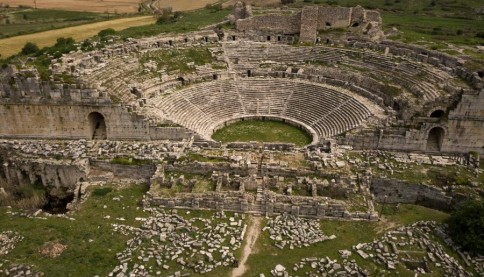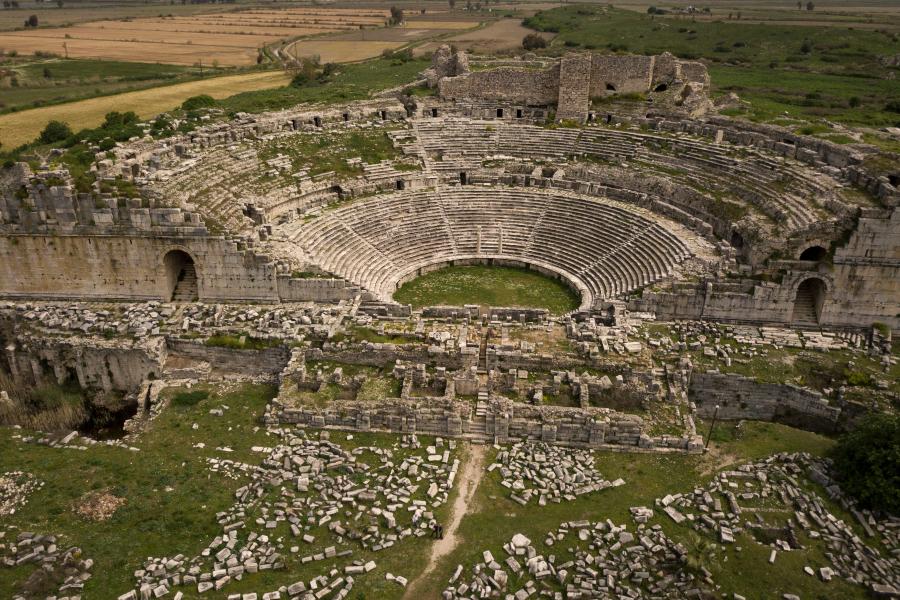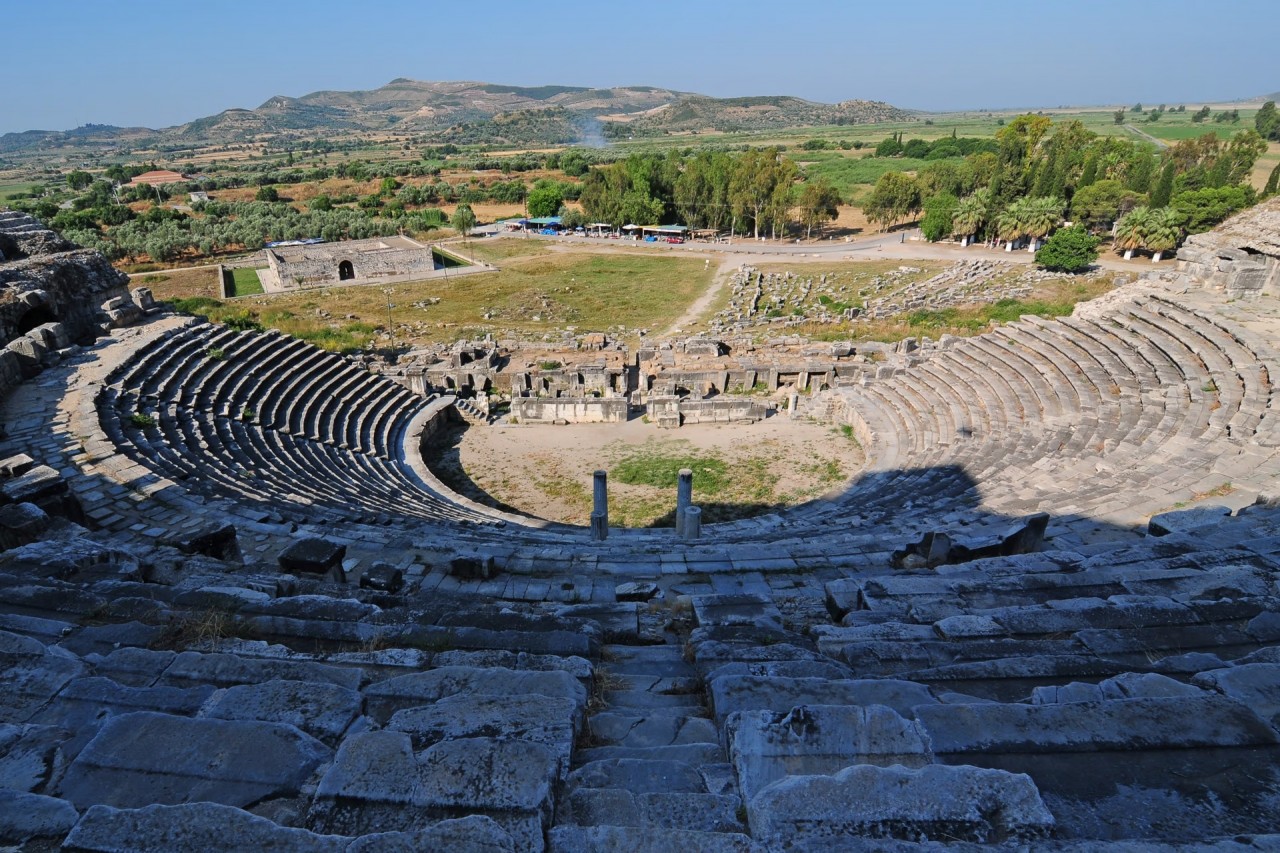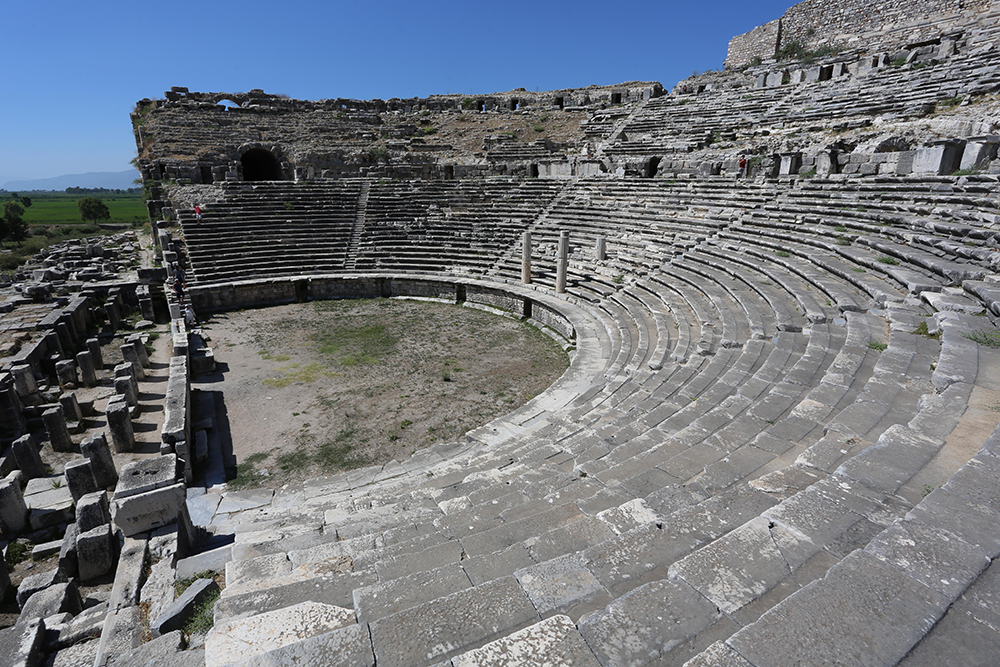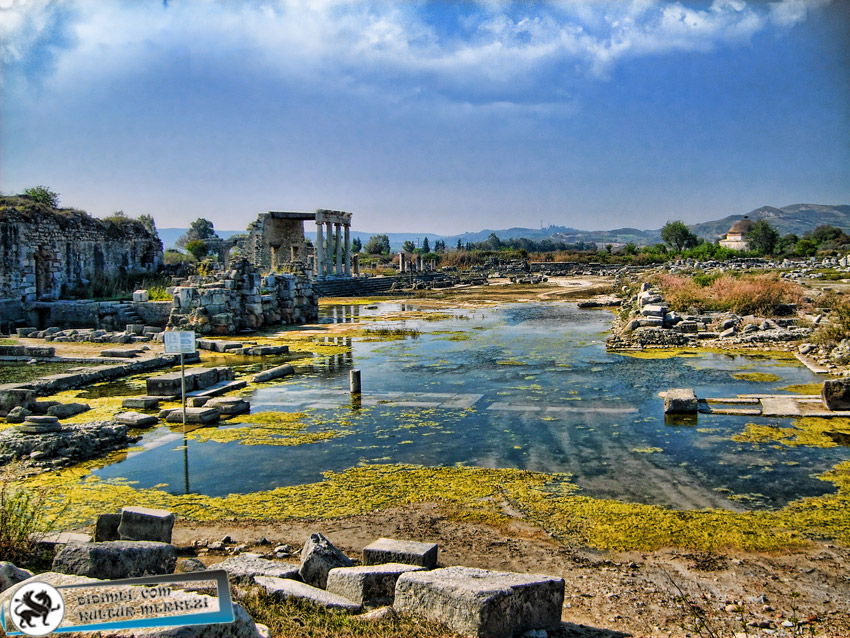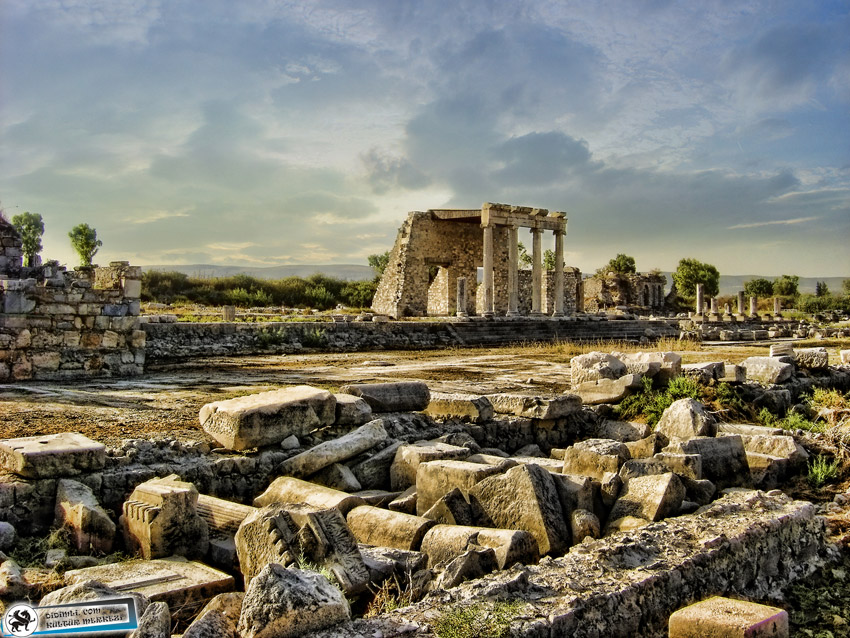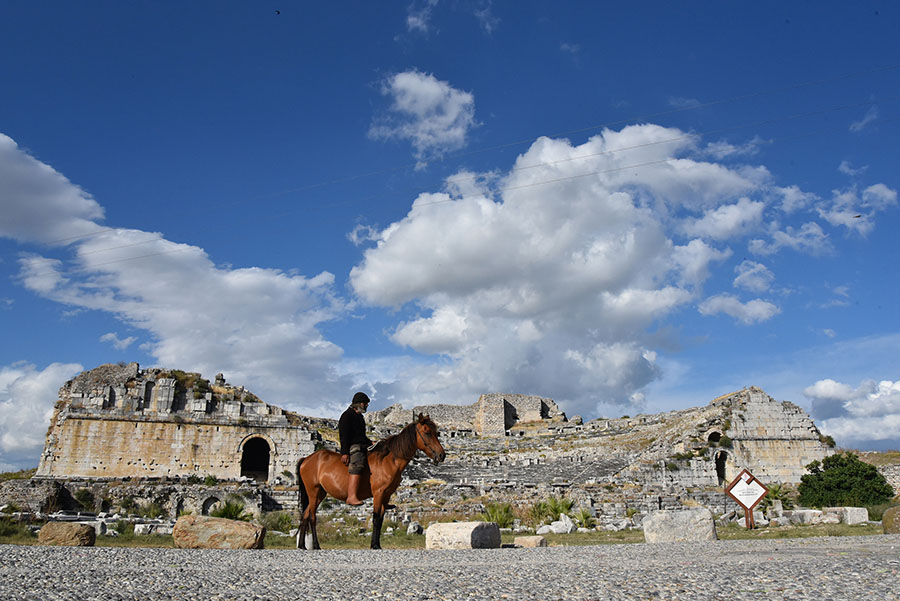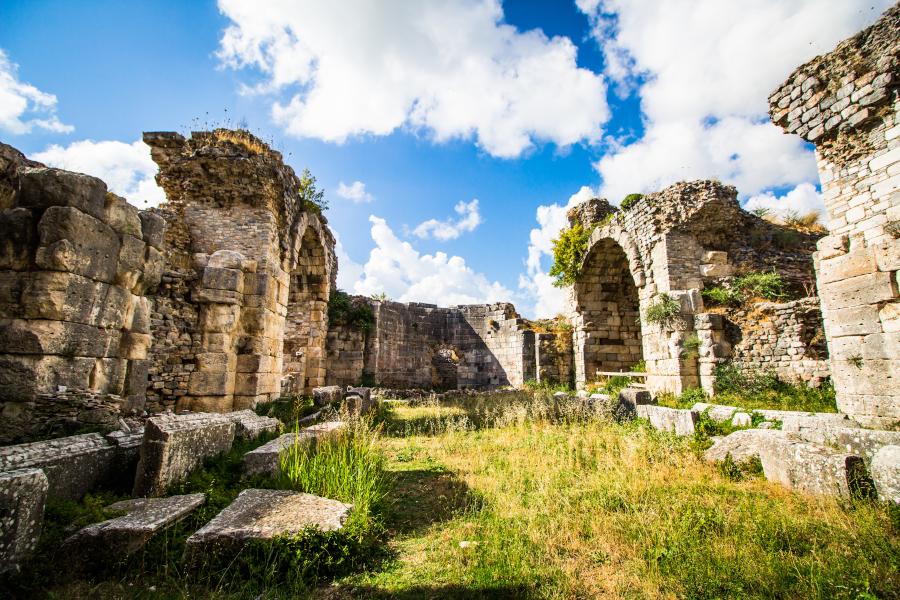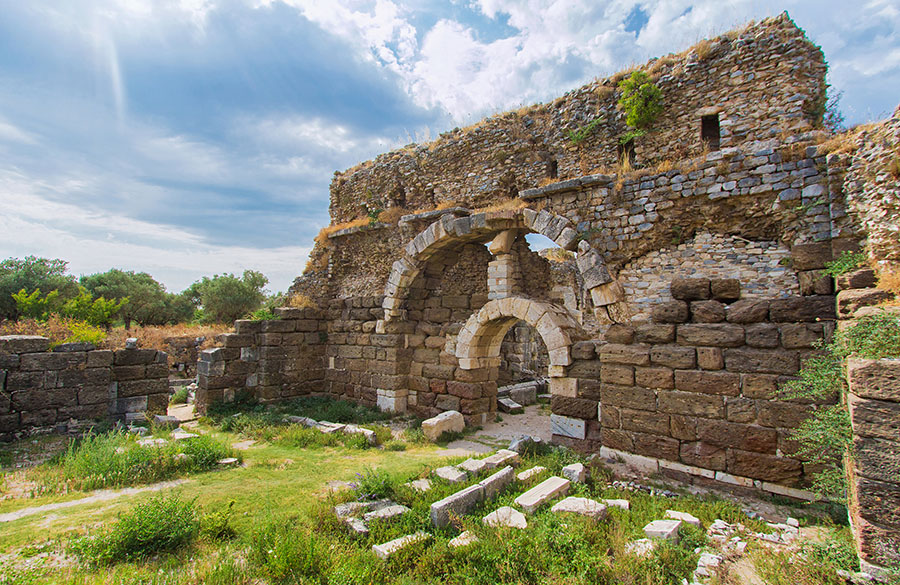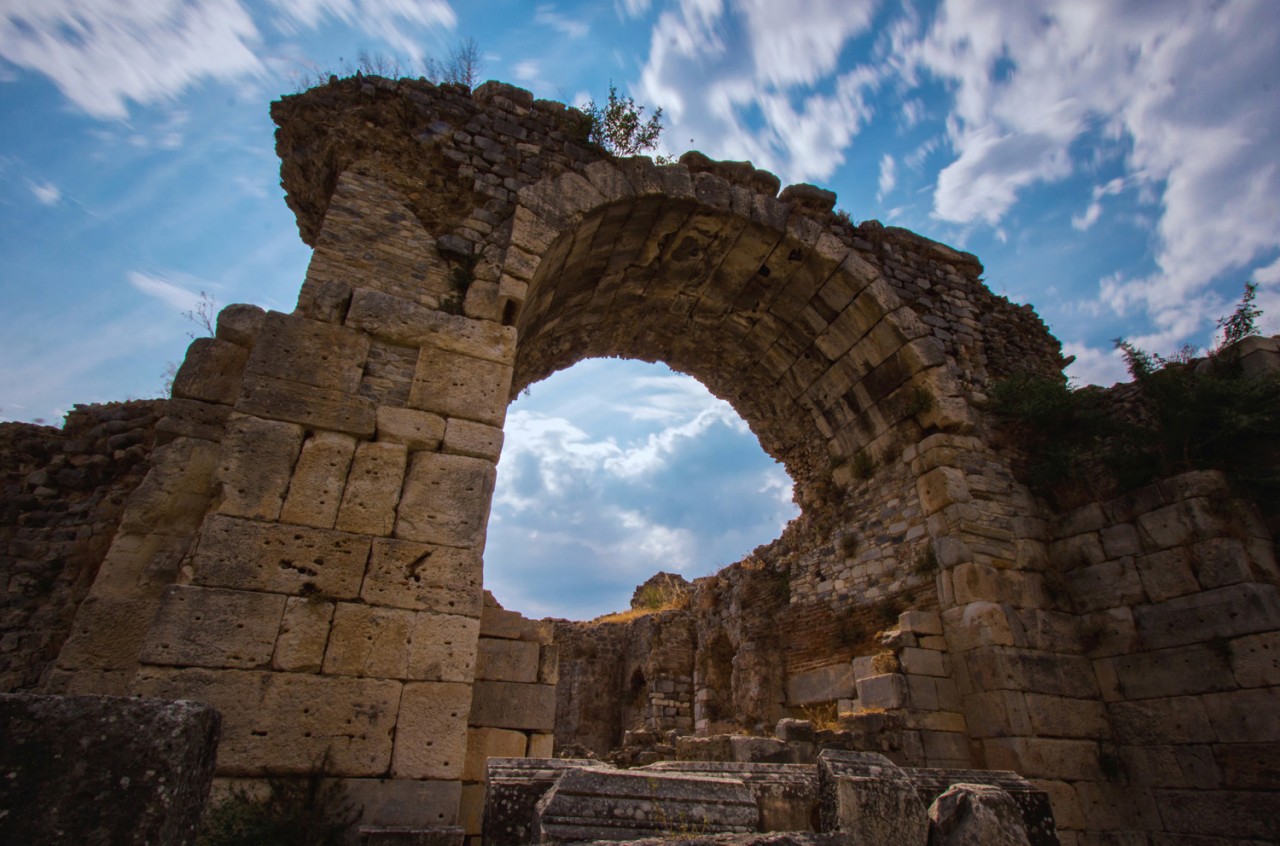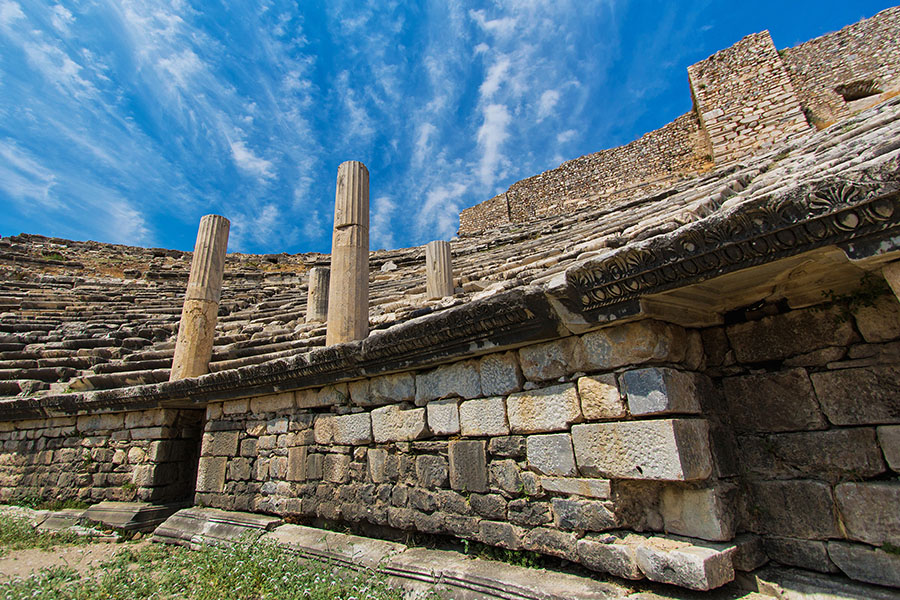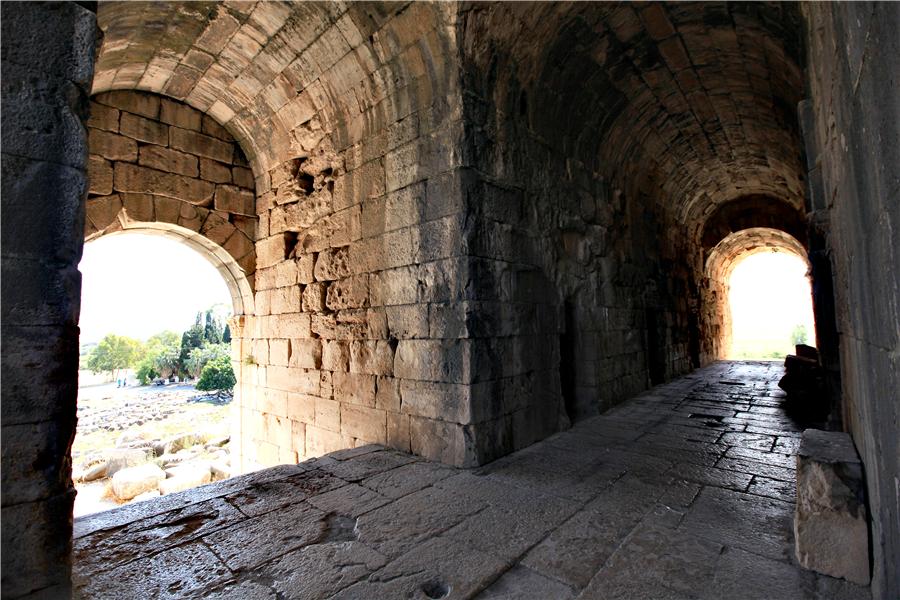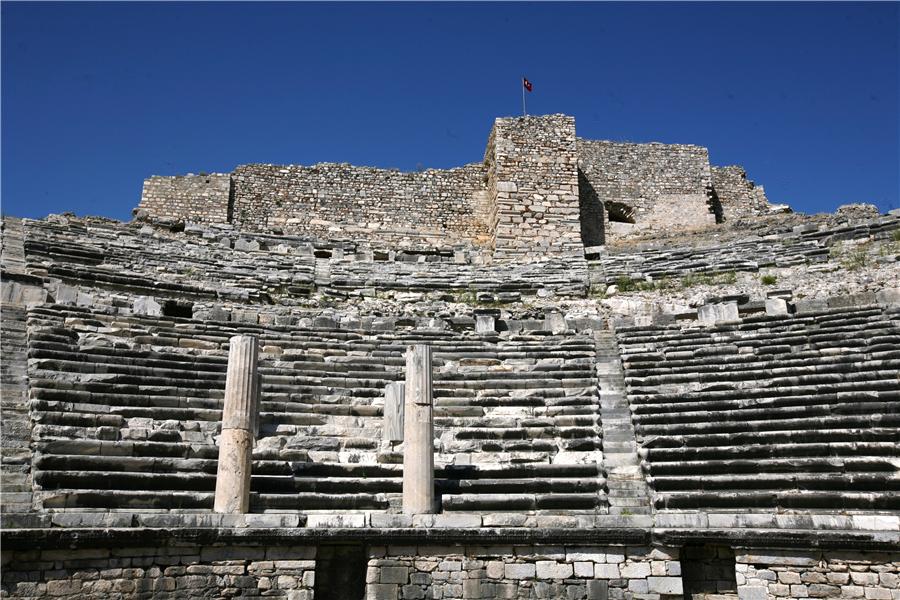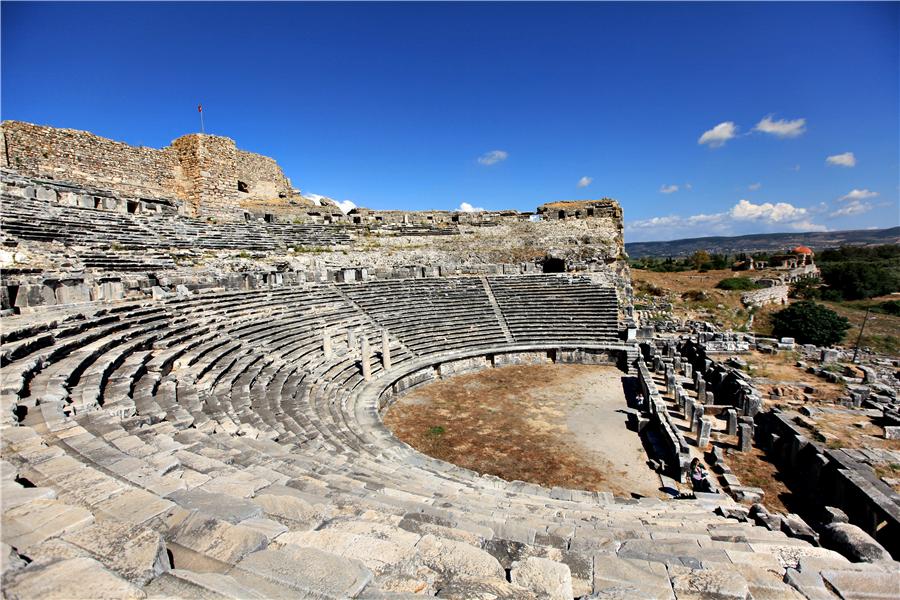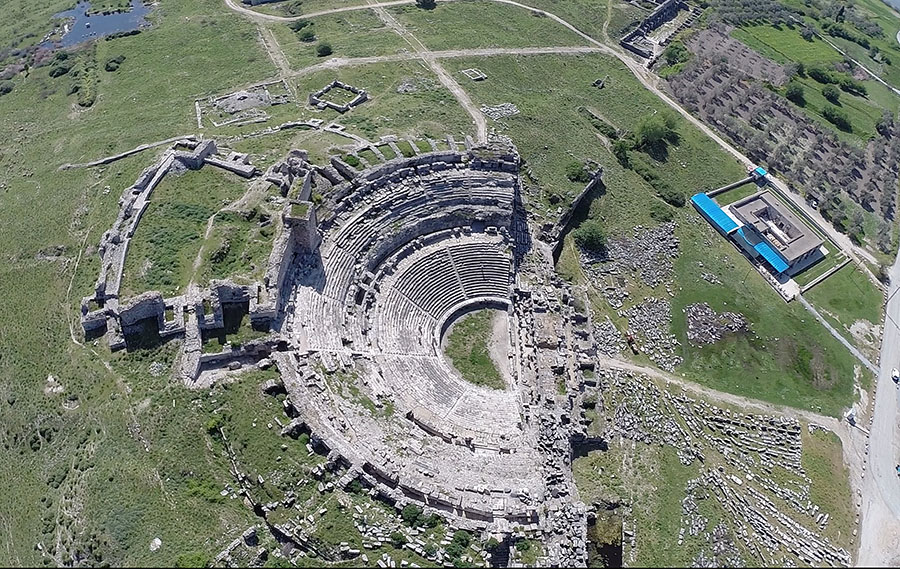Milet Ruins
- Zip code
- Balat
- County
- Didim
- City
- Aydin
Share links
Description
20 km from Didim. The ancient city of Miletus, located at a distance, is in the Ionian region; He was one of the most important members of Panionion, a religious and political union formed by 12 ion cities. There are many opinions and rumors about its name and establishment.
It is said to be related to the names Milawanda or Milada in Hittite texts. The meaning of these words; It means the owner of the way to the mother goddess or the place of reaction. He owns the road to Didyma Apollon Temple. Again, the name Miletus, Miletos, which did not play an important role in its establishment, may be connected with the name of the city of Miletos in Crete.
The ancient city of Miletus, founded in the gulf where the Menderes River and the Aegean Sea meet, adding fertility to the geography it has since ancient times, was founded in BC. It has been one of the most important settlements of its age in every period since 3000 years, and owning the city of Miletus meant controlling a large area. Miletus, the brightest period, BC. It is the commercial capital of the world with its 4 ports and over 90 colonies in the 7th century.
Although it lost its port feature due to the alluvium carried by the Büyük Menderes river, which Herodotus called the "Working River", it is a collection of works that fascinate the world with its riches even today. The most important work of Miletus that left its mark is the School of Philosophy of Miletus, which represents an important school in the history of world thought. Miletus is one step ahead of its contemporary cities with this school, which is the birthplace of modern thought. Tales, one of the seven sages of antiquity, Anaximander, who made the first map of the world, philosopher and historian Hekaitos, urban planner and architect Hypodamos lived in Miletus.
The most interesting structures in the city are the Roman Age structure with a capacity of 15,000 people, the Theatre, the Roman Baths, the Delphinion, the North Agora, the Ionic Stoa, the Capito Baths, the Gymnasium, the Bouleterion, the South Agora structure and the Faustina Bath. The finds obtained during the excavations of the Miletus and Apollon temple are exhibited in the Miletus Museum and its garden. In addition, artifacts taken abroad from Miletus excavations are exhibited in different cities of the world. In the past, Didim was connected to Miletus, 20 km away, by a sacred road filled with statues.
The first excavations in Milet were made in 1899 by Th. It was started by Wiegand and continued until 1938, except during the First World War. The works that were restarted after the Second World War are still being carried out by the experts of the German Archaeological Institute with excavations and repairs.



